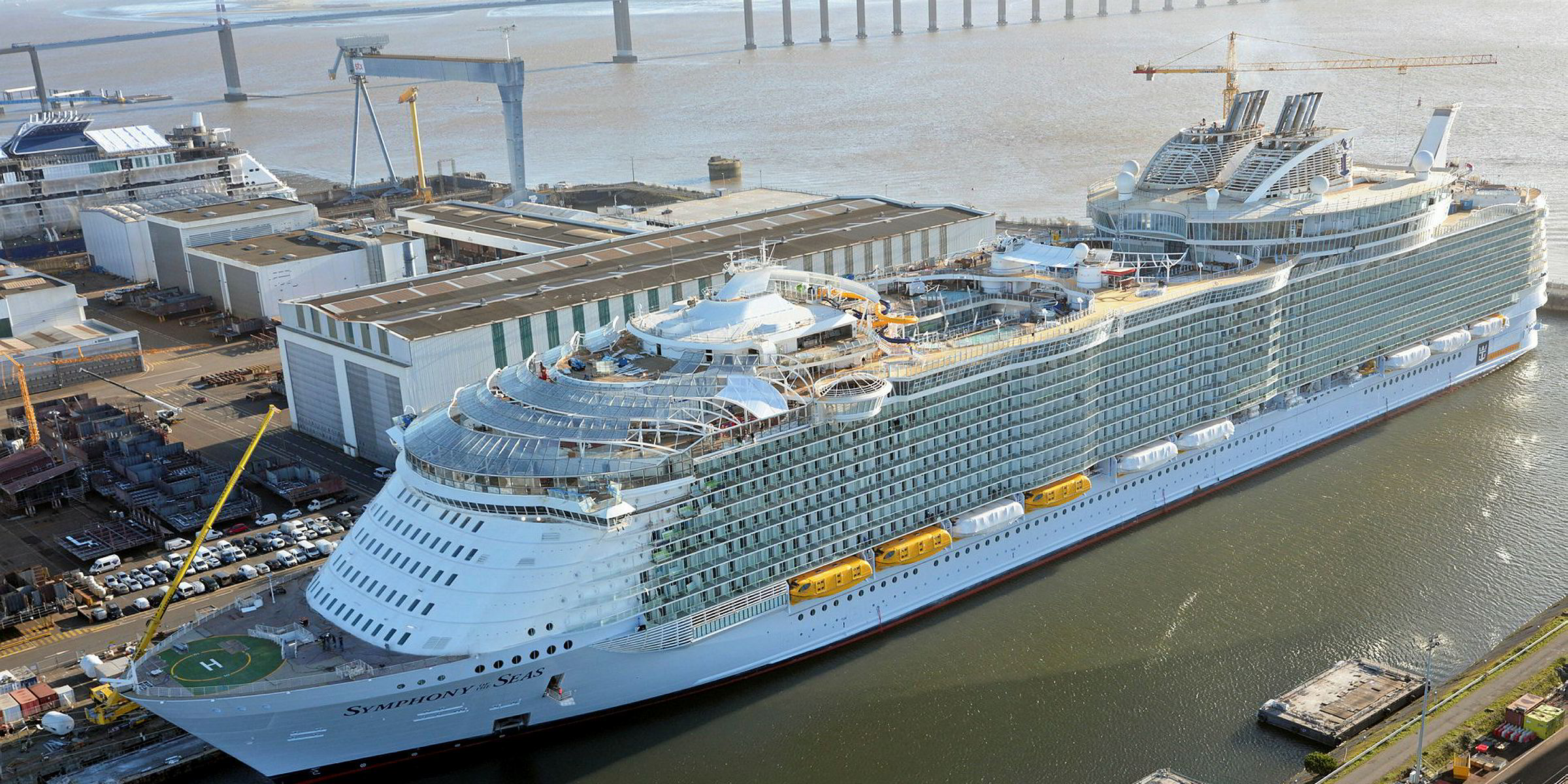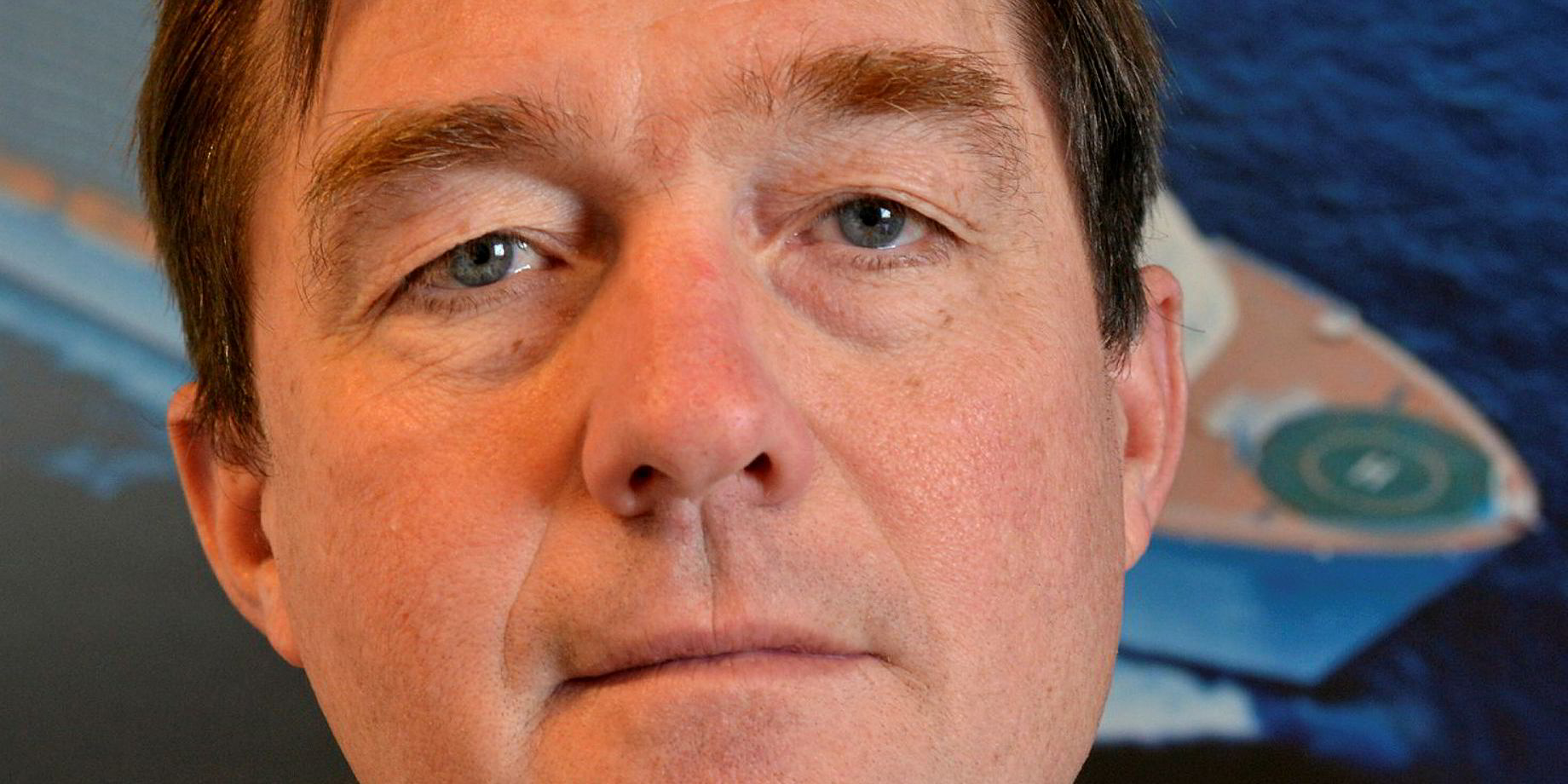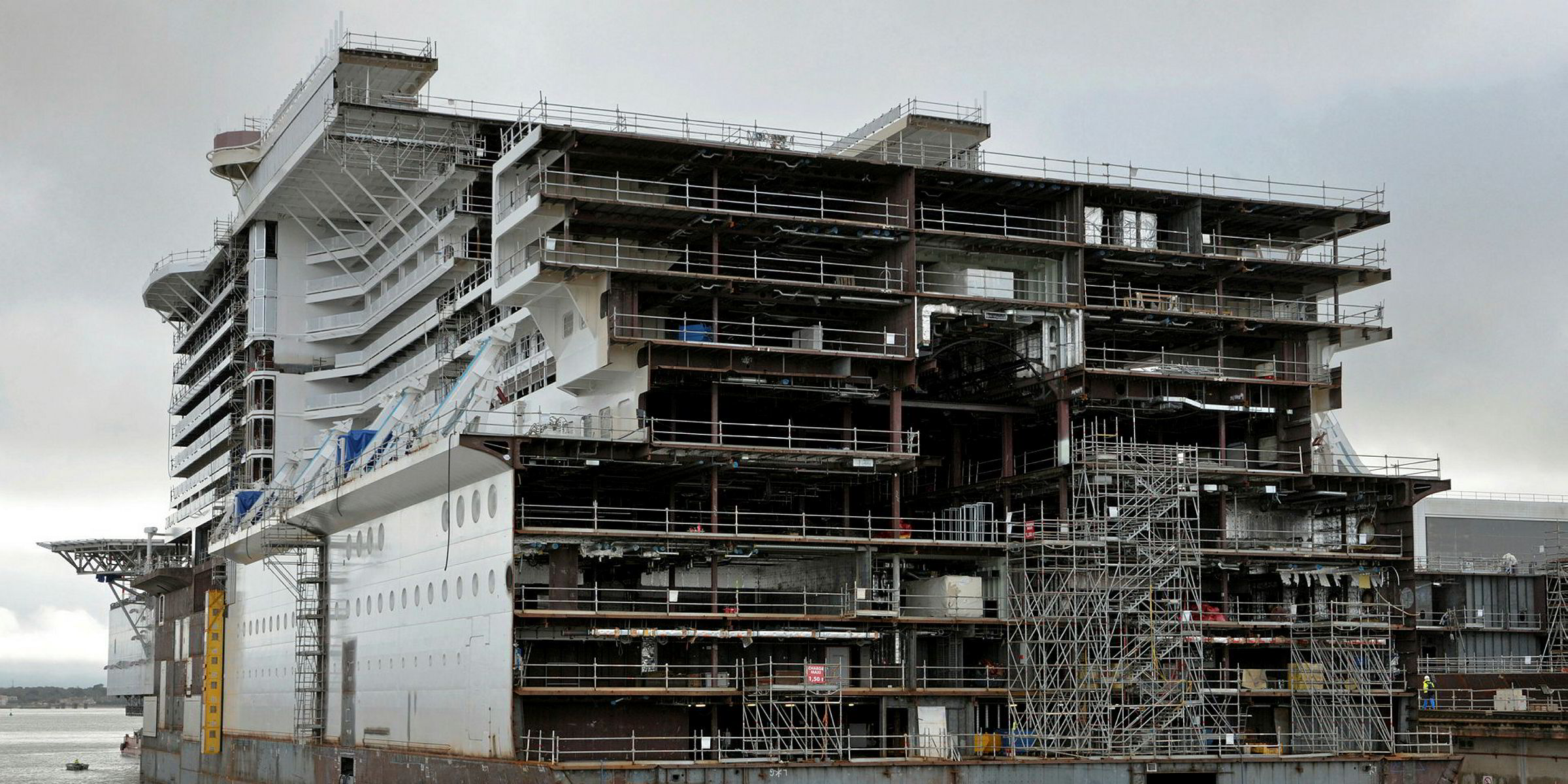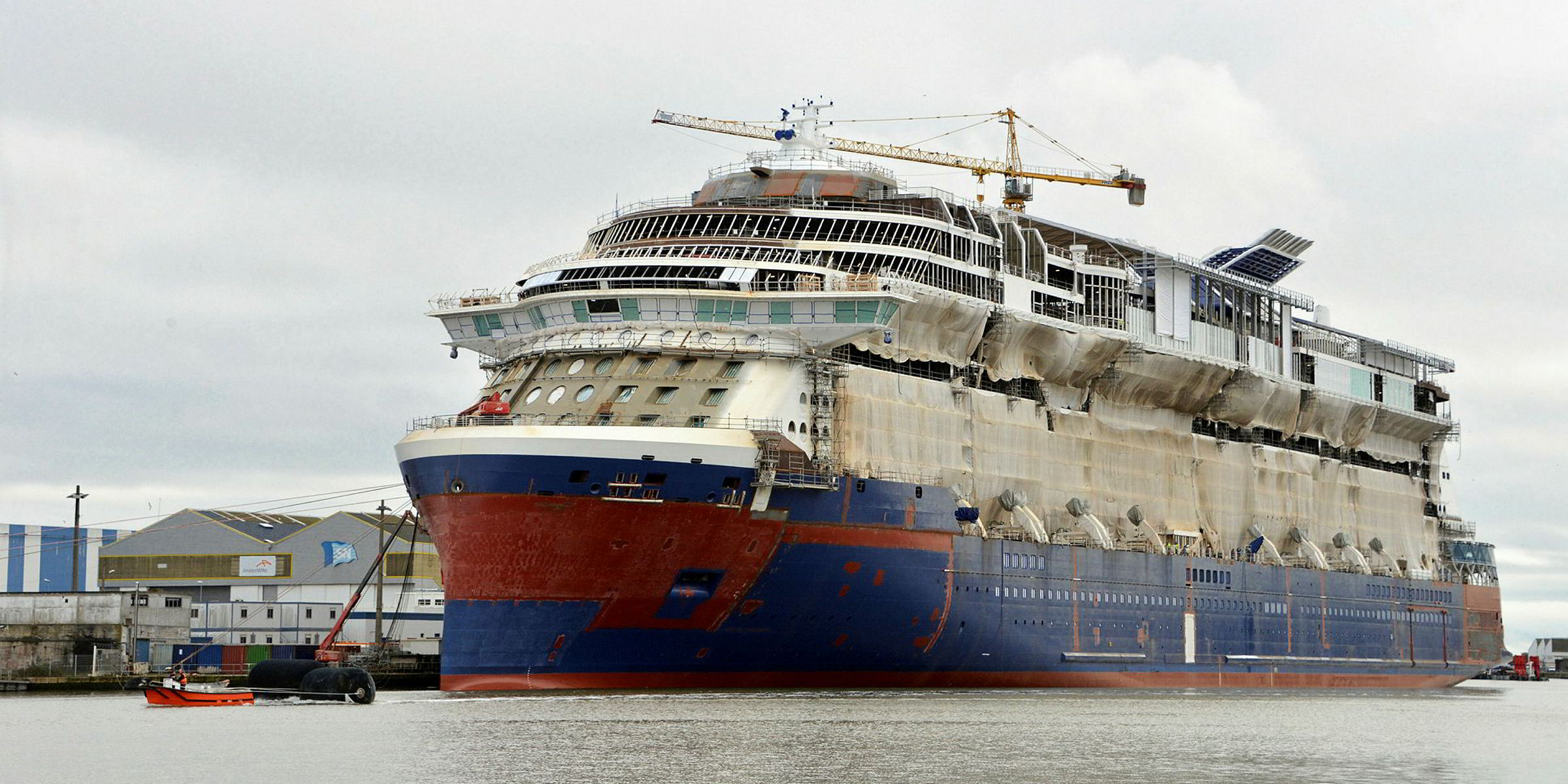Size matters when it comes to cruiseships — and MSC Cruises is pushing the passenger parameters with its record-breaking World-class series to be built in Saint-Nazaire in France.
MSC is working on the final contract details of an order for two firm ships, plus two options, for delivery in 2022 and 2024, which will accommodate up to 6,850 guests in 2,760 cabins.
It makes them the largest occupancy cruiseships ever built and among the biggest in terms of tonnage, at around 205,000 gt and 330 metres long.
By the time they are delivered, shipbuilder STX France will have another identity after Fincantieri finally signed a contract last month with the French government for 50% of the shipbuilder. Another 1% will be loaned by the state, giving the Italian company effective majority control.

Saint-Nazaire’s massive dry dock built the 550,000-dwt Batillus class supertankers at the end of the 1970s and pioneered the modern-era construction of the super-cruiseship, starting with the 2,744-passenger Sovereign of the Seas in 1987.
STX France is scheduled to deliver the 230,000-dwt, approximately 5,500-passenger Symphony of the Seas to Royal Caribbean Cruise Line next month, even larger than the Saint-Nazaire-built, Oasis-class 226,900-gt Harmony of the Seas — the second-largest passengership in the world.
Stephane Cordier, STX France’s vice president of ship development and performance, tells TradeWinds that owners are not leaning towards building much bigger cruiseships.
Length and height of the latest leviathans mean they would soon hit restrictions fitting under bridges and into harbours. Different shipyards also have physical limitations.
The larger the ship, the bigger the challenge sometimes in the construction process because it triggers peaks, for example in workforce required, which can be difficult to manage.
Cordier says that generally in cruiseship design there is a trend towards more accessible views of the sea from the inside. It means larger openings and more glass, “more flexibility between inside and outside venues. But it brings with it structural challenges”.
Meanwhile, designers are down to fine-tuning hull designs to minimise wave resistance and maximise space in a given length. Saint-Nazaire has been advocating vertical or slightly inverted bows and integrating the bulb into the hull structure.
Such a feature is likely on Celebrity Cruises’ 127,000-gt Celebrity Edge series, the first of which is scheduled to be delivered by STX France in the autumn.
Also popular among cruiseship operators are hull air lubrication systems to reduce friction.
The cruiseship industry has helped pioneer the use of LNG as a fuel, including MSC’s World-class series at STX France.
Cordier describes LNG fuelling as a big step forward for cruiseships by successfully addressing environmental issues surrounding emissions, including particulates and CO2.
But LNG doubles the required space for fuel storage and that has implications for the general arrangement of the hull and cabin space.
However, Cordier says STX France is quite confident it can achieve key parameters such as passenger double occupancy per gross ton comparable to previous generations of cruiseships using heavy fuel oil.
"We have been able to integrate this technology without losing any of the attractiveness of the ships,” Cordier says.
Also, scrubber installation is thriving.

"The main cruise companies have huge scrubber programmes and our Service BU is actively engaged in retrofits,” Cordier says, while acknowledging that scrubbers occupy space and impact stability where margins potentially need to be recovered.
Cordier says zero carbon output remains somewhere down the line because that entails developments in large-scale hydrogen technology.
He adds that diesel-electric propulsion will remain a feature on many cruiseships in the future because of the flexibility it offers, including permitting operation in areas of the world where it is difficult to bunker LNG.
Cordier says propulsion pods remain popular because of the maneuverability, fuel saving and emissions reductions associated with them.
Generally, they have performed favourably on cruiseships compared with shaft lines but there are greater revolutions-per-minute (rpm) contraints. One issue is that once a crew has got used to using pods, it can be difficult reverting to shaft line propulsion for manoeuvring.

Safety remains high on the agenda for cruiseships, with Cordier highlighting the IMO’s Marine Safety Committee last year adopting amendments to Solas 2020, raising the damage stability requirement of passengerships — in other words, their ability to remain stable and afloat in the event of flooding and collision.
He also focuses on other cruiseship-relevant issues under discussion, including protecting the machinery space with a form of double hull — something STX France has been including in its designs for a while.
Other big changes in the pipeline involve life-saving equipment.
In the near term, Cordier says the delivery of two new large cruiseships from Saint-Nazaire in 2018 — the Symphony of the Seas and Celebrity Edge — marks yet another "important milestone for the yard as it will become the standard for the years to come".



